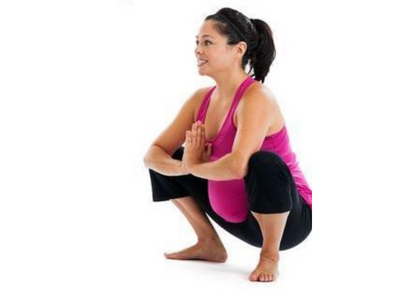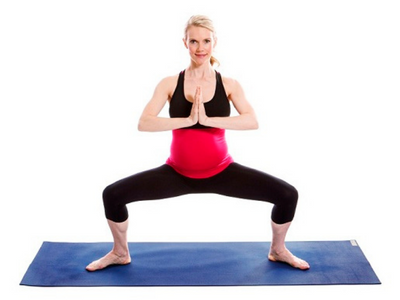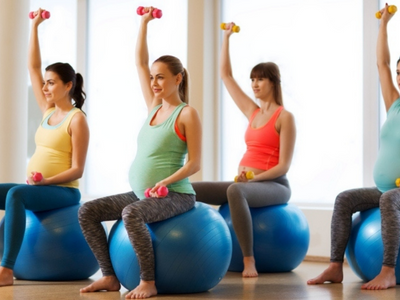Each woman has a different take on pregnancy based on the lifestyle, culture, general fitness, complications accompanied with the pregnancy. In this article we want to show research based benefits of squats during a “HEALTHY PREGNANCY”. We strictly advise your to consult a gynaecologist and your ANC consultant before you try these exercises.
Research shows that exercise during pregnancy has a positive effect on the pregnancy and labour. Similarly performing squats throughout the pregnancy can have following benefits:-
- Keeps Lower back, core muscles and lower body strength maintained.
- Helps in opening up hips and pelvis by the third trimester , which helps in easier labour.
- Helps in maintaining the strength of the pelvic floor muscles
- Can prevent back pain during and after pregnancy.
- Helps in maintaining a good posture during pregnancy.
- Prevents excessive weight gain
v
In the past few years a lot of pregnant ladies who came in to learn ANC exercises expressed concerns like, performing squats causes increased intra-abdominal pressure, which affects the blood supply to the baby. The second myth I came across is avoid performing full squats or for that matter bending forwards or sitting on the ground as it may affect the baby’s growth. As an ANC consultant , I would say it differs from case to case.
Given the vast Indian cultural history, our ancestors have given births without any science to support them. women were working in the kitchen or the house with the need to squat or sit on the ground or a small step for every little chore. By just doing their everyday chores while sitting on the ground and getting up they squatted several number of times in a day and still normal babies where born. So its absurd not to sit on the ground or not to squat.
Secondly if considered squats as a form of resistance exercises there is research to prove squats do not affect the pregnancy or the baby health. Check out this research paper if you are into fact finding spree
https://obgyn.onlinelibrary.wiley.com/doi/pdf/10.1111/aogs.12525
The take away:- well this research doesn’t about safety of squats but it says resistance exercises in general lead to a better out come. The sample size is small, but some evidence is better than none.
Deep squatting seems to offer a better overall way to stretch and align the pelvis in pregnancy and help the baby to descend. Many of the fifty or so clips and articles I’ve reviewed wisely , but only a few of the web articles differentiate between the parallel and deep squat and even less listed are any contra indications.
The contraindications to doing deep squats are:-
- hemorrhoids,
- vasa previa,
- placenta previa or
- a breech lie.
But perhaps the more serious contraindication for squats is lightening (when the baby descends into the upper pelvis) which normally occurs around the 34-38 week mark in primips but could be earlier or later
Biomechanically seeing the full squat, it has its pros and cons. If done with the correct technique, it has the above mentioned benefits. But when done a full squat in a wrong manner can put undue pressure on the pubic joints or the sacroiliac joints in your pelvic girdle. So make sure you learn the correct form from your certified trainer/yogi/physio if you are inexperienced in performing a full squat.
Here is a list of different type of squats which you can do safely during pregnancy
(1)BODY WEIGHT SQUATS

During pregnancy, the weight of your body may offer enough resistance for you to work out effectively. But you can always add weight by holding dumbbells in each hand, or by setting a barbell across your shoulders.
- Stand with feet shoulder-width apart.
- Hold your arms straight out in front of your body for balance if you don’t have weights or a bar.
- Lower yourself into a full or a half squat position. Only go as far as you’re comfortable while keeping your back straight, weight in your heels, and knees behind or in line with your toes.
- Return to starting position, squeezing your glutes on the way up.
- Perform 3 sets of 10 to 15 repetitions.

Note :-
- performing full squats in the right form aides the above mentioned benefits
- Avoid the half squats if you have never worked out before or you have existing knee pain.
- Performing the squats in front of the mirror, helps you in achieving the correct form.
- Weights or resistance to be added only after consulting your personal trainer and/or physio.
(2) SUMO SQUATS
This squat variation targets the inner muscles of the thighs and glutes. It’s also an excellent stretch to open up the hips.
Note: Your joints are more flexible during pregnancy, so it’s easy to strain yourself by stretching too far. Do not go past your normal range of motion.
- Step out into a wide stance with your feet greater than shoulder-width apart and toes pointing outward, with knees tracking in line with the toes.
- Lower yourself into a squat position. Only go as far as you’re comfortable while keeping your back straight, weight in your heels, and knees behind or in line with your toes.
- Keep your legs turned out throughout the movement, making sure your knees do not cave in toward each other.
- Return to the starting position, squeezing your glutes on the way up.
- Perform 3 sets of 10 to 15 repetitions.
- SQUATS AGAINST WALL WITH EXERCISE BALL
This exercise adds a level of instability to further engage the core muscles during the squat movement. If this exercise bothers your knees, only go as low as you feel comfortable.
- Stand against a wall with an exercise ball between the wall and your lower back.
- Place feet shoulder-width apart.
- Hold your arms straight out in front of your body for balance.
- Contract your abdominals by pulling in your bellybutton as if you were trying to pull it to the ball behind you.
- Lower yourself into a sitting position. Only go as far as you’re comfortable while keeping your back straight and shoulders back.
- If you find you have a lot of pressure on your knees, make sure your feet are far enough away from the wall to maintain a 90-degree angle at the knee when in a full squat.
- Return to starting position, squeezing your glutes on the way up.
- Perform 3 sets of 10 to 15 repetitions.




